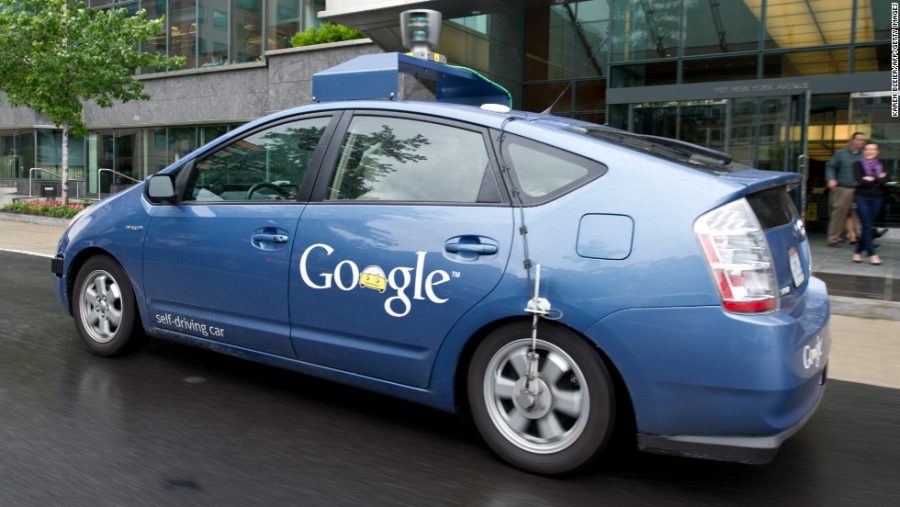The 21st Century Transportation Revolution
Photo Credit: CNN
A autonomous vehicle that closely resembles the model featured the Google youtube video with Steve Mahan. Google is only one company rushing to produce their own self driving cars, proving autonomous vehicles are taking over city streets.
January 12, 2019
The first railroad tracks in Idaho were laid in 1874. Cars didn’t become popular in until the early 1900s. In 1977 he Boise area’s own public bussing system, the Valley Regional Transit, was founded. Lime and Bird e-scooters took over Boise overnight this past year. Following the theme of transportations developments, will 2019 be the year self-driving cars make their way to Idaho streets? The likely answer is no, but automobile enthusiasts can dream.
In 2018, Governor Otter took the first steps towards legalizing self driving cars by appointing the Autonomous and Connected Vehicle Testing and Deployment Committee.
The Committee was tasked with providing well informed suggestions and recommendations relating to the future of autonomous and connected vehicles in the Gem State.
They met 4 times over 2018 and released their first report this past November. Ultimately, they recommended that Otter “Encourage legislation to allow autonomous vehicle testing and deployment.” They also advised that “Rather than amending all sections of motor vehicle or traffic law to include the use of cooperative automated transportation, consider establishing regulatory or policy actions as a separate chapter of Idaho code.” A full report can be found easily online.
27 other states have already passed legislation monitoring the use of self driving cars, including California and Oregon, which poses questions of interstate border issues. It is important for all United States citizens to become familiar with autonomous and connected vehicle legislation between states- you don’t want to cross the border of your road trip and find out your car isn’t legal in that state. While there are certain laws related to this specific issue, they do you no good if you are not familiar with them.
While some are eager to experience what self driving cars can contribute to our society, many are skeptical and have a right to be. They may promise wonders for the visually impaired, but self driving cars are seen as an economic threat, where some will prosper and some will be left behind. Uber drivers and gas stations will be hit hard as startup companies and large corporations finalize their ambitious autonomous vehicle plans. Another question, who will be at fault should a fatal crash occur? The human driver, or the software?
Not to mention the price tag. In 2012, Google published a youtube video of Steve Mahan, a man who has lost 95% of his vision, navigating around in his self driving Google car. According to Chuck Tannert from Fast Company, the car in that video would cost over $300,000 after additional software bells and whistles.
The average American is only willing and/or able to pay 1/10 of that price. Maybe it’s worth it to the man without 95% of his vision, but is that really practical to the average American?
Sam Beckley, a Junior Dennis Technical Center Automotive student from Timberline High School, who also job shadows at Maz Tech, shared his opinion on the future of self driving cars as an informed student. “I believe that sophisticated driver aid systems would be a much more feasible future then the fully autonomous vehicles promised.”
He also added, “The build quality is bad. I just think they are scary.”
At this point, it’s not an if. It’s a when. Self-driving cars are speeding their way into the American transportation system, no matter how scary that may be. It’s our job as citizens of the road to be informed of the new vehicles we could be sharing the roads with in 30, 10, or as early as 5 years into the future.
Think back to when railroads and public transportation were completely alien technology to the public. Soon, self driving cars will become the transportation revolution of the 21st century.



